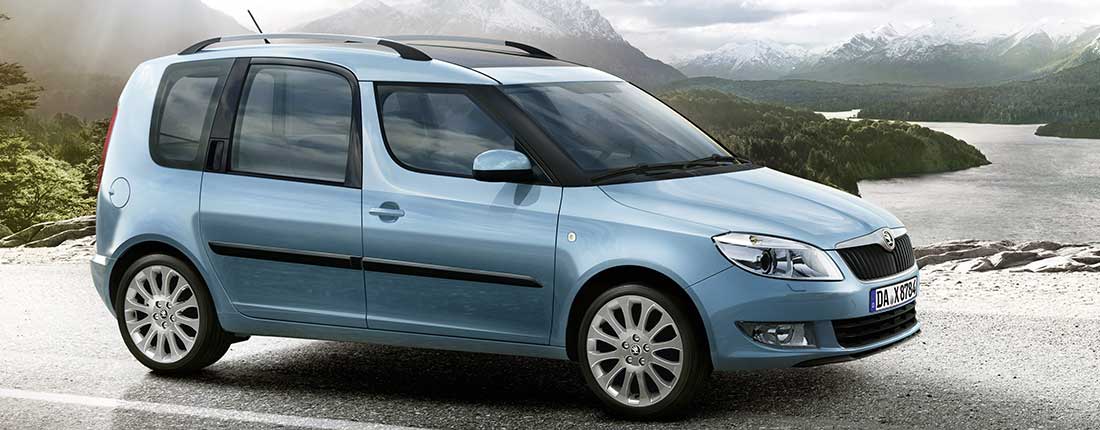
Skoda Roomster - intercity. Cottage
Second day of testing. Mileage in our test: 350 km. I have two trips planned for the next few days, so I'll stick with my first impressions for now. And for today: a curiosity from the Roomster assembly line.
Do you know what the Roomster has in common with some BMWs, Mercedes or even Spykers? Van Scodi also leaves 4 footprints. And this is not the result of an oversight of the designers or the fact that our test vehicle after a serious accident is just a rear track 64 millimeters larger than the front axle.
And how are these cars different? The fact that in other brands the difference in the tracks was provided initially, but in Roomster ... well ... it just so happened. And so it was.
Bold project
Roomster first appeared on paper in a rather bizarre form. A simple, almost childish sketch showed a house with an airplane cockpit attached to it. The idea was both futuristic and logical: the passenger should feel at home in the Roomster, and the driver should feel like a pilot. Futurism left its mark on the shape of the front door and the roof over the cockpit, many years later they still remind us of the first sketch of the cockpit.
The sketch materialized in 2003 as a concept car. Sliding rear doors, a huge wheelbase, a boldly shaped roof, an eye-catching sunroof and a fancy glass tailgate. However, the bold decisions did not stop the public, who really liked this first step of Skoda in the minivan segment. The Czechs began to prepare the Roomster for production.
Concept slicing, modeling series
Every concept car has its share of extravagance, but only a few cars can afford it in mass production. The Czechs still took a risk, leaving the characteristic features of the aircraft cabin, but the rest of the car had to be smoothed out to a look acceptable to the general public. How wide? Market research provided the answer: Roomster could sell about 30-40 cars a year.
That's a lot, but not enough to make it worthwhile to design a new floor platform specifically for this model. So when VW headquarters finally approved work on the production version of the Roomster, the search began in earnest. Fabia platform? Too small. Octavia platform? Too big! And then a simple and original decision was made: based on these two models, a house with a cockpit will be built.
And since then, at the Skoda plant in Kvasiny, Czech Republic, and since this year at the smaller plant in Vrchlabi, the “nose” of the Fabia floor platform is connected to the “tail” of the first generation Octavia through a special connector. Consequences? Two-room cottage, consisting of front suspension, steering and Fabia engines, and torsion beam rear suspension from Octavia. And therefore it “turned out” so that the track on the rear axle is larger than on the front.
I promised that I would call Roomster a new name in every episode. I think that this time he deserved a playful nickname ... Cottage. In the next issue, I will introduce our test machine in more detail and talk about the details of its additional equipment.